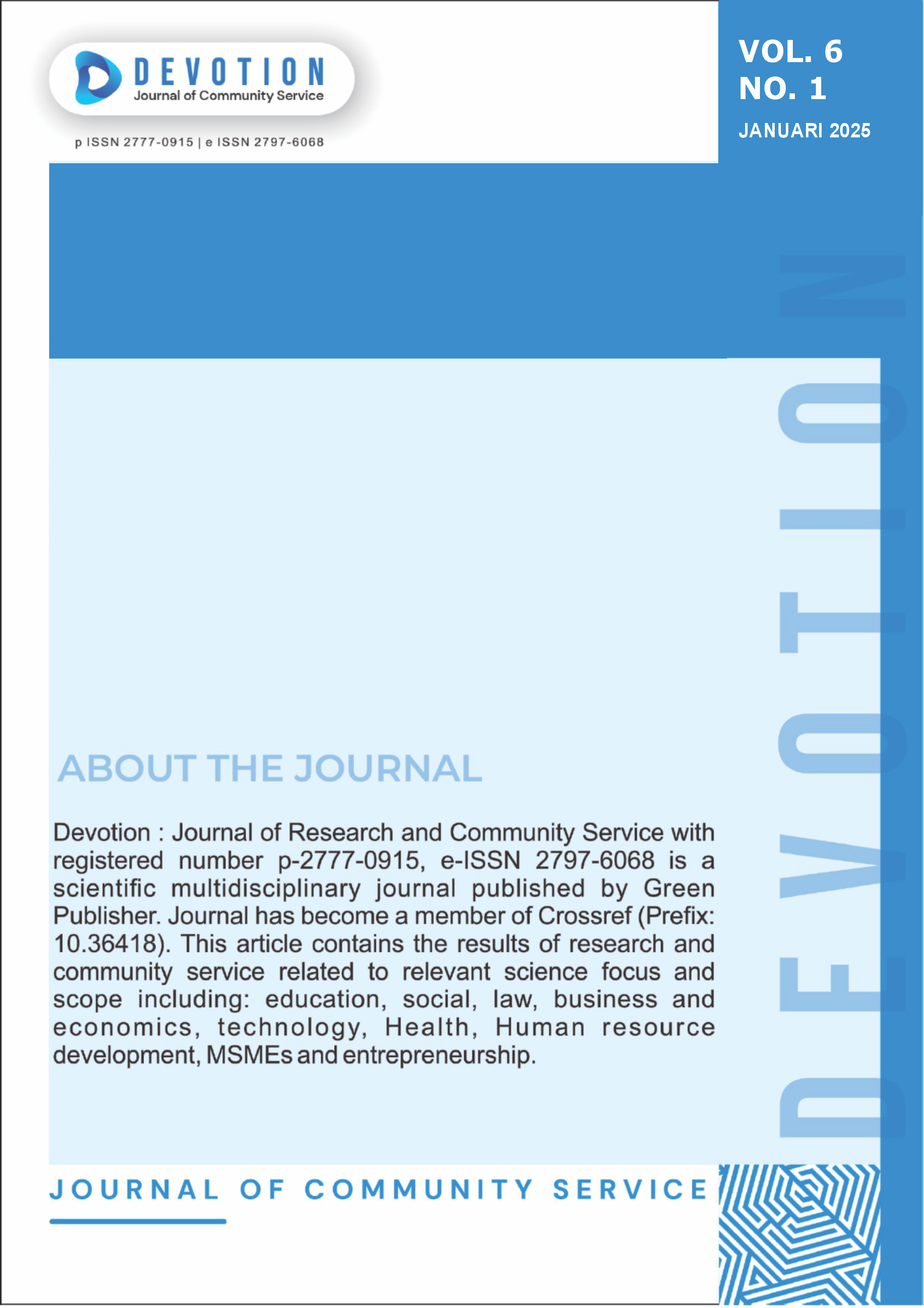Analysis of Occupational Safety and Health Management System (SMK3) on Workers In Cikeruh Majalengka Bridge Construction Project
DOI:
https://doi.org/10.59188/devotion.v6i1.25411Abstract
The implementation of safety and health (OSH) systems in the work environment is a crucial component for the running of a business entity, because the consequences of accidents can have a detrimental impact on the workforce and the institution. This study was conducted to evaluate how OHS affects the level of worker productivity. A quantitative approach is the method used by collecting primary data through distributing questionnaires to 35 workers at the Cikeruh Majalengka Bridge Construction Project. Data analysis was carried out using IBM SPSS 26.0 for Windows, by conducting an Instrument Test consisting of Validity Test and Reliability Test. The variables studied consisted of four independent variables: Planning (X1), Organization (X2), Actuating (X3), Controlling (X4) and one dependent variable, namely Worker Productivity (Y). The results showed that Planning has a positive effect on productivity with an average value of 1.98, Organization 2.0, Actuating 1.78, and Controlling 1.94. The four independent variables as a whole have an average value of 1.92 which indicates a positive influence on worker productivity on the project, because it is in the interval class 1.6 ≥ x ≤ 2.0. This proves that factors such as planning, organization, implementation, and supervision play a significant role in increasing worker productivity on the Majalengka Cikeruh Bridge Construction Project.
Downloads
Published
Issue
Section
License
Copyright (c) 2025 Pachri Sutanto, Renata Pitaloka, Lia Fatmala, Nikko Rozy

This work is licensed under a Creative Commons Attribution-ShareAlike 4.0 International License.
Authors who publish with this journal agree to the following terms:
- Authors retain copyright and grant the journal right of first publication with the work simultaneously licensed under a Creative Commons Attribution-ShareAlike 4.0 International. that allows others to share the work with an acknowledgement of the work's authorship and initial publication in this journal.
- Authors are able to enter into separate, additional contractual arrangements for the non-exclusive distribution of the journal's published version of the work (e.g., post it to an institutional repository or publish it in a book), with an acknowledgement of its initial publication in this journal.
- Authors are permitted and encouraged to post their work online (e.g., in institutional repositories or on their website) prior to and during the submission process, as it can lead to productive exchanges, as well as earlier and greater citation of published work.













